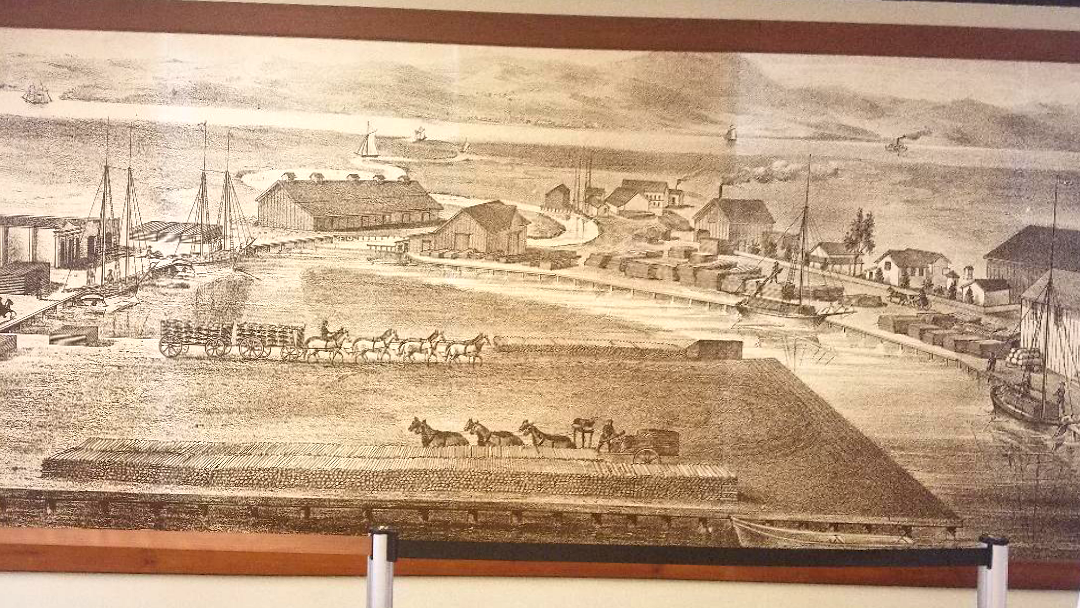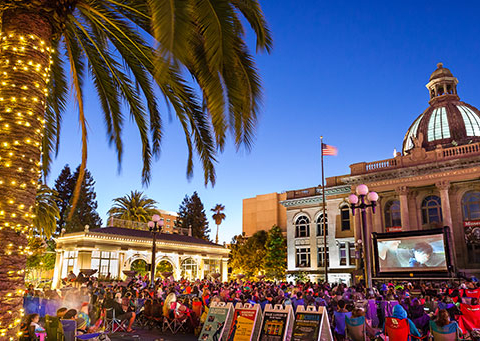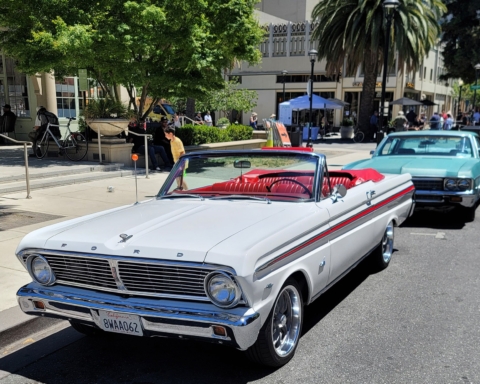Until recently, people lined up to see a mural at the Wells Fargo branch at 1900 Broadway, now vacant and the proposed site of a seven-story building housing offices, apartments and retail stores. Okay, a bit of a stretch because the approximately 30-foot-long mural was directly across from the teller windows. Waiting customers could hardly be expected not to see the mural that depicted Redwood City’s early years, a time when today’s downtown was a bustling waterfront featuring piles of lumber ready for shipping.
“We have asked Wells Fargo to leave the mural in place,” said Mark Murray, spokesman for Lane Partners, the firm that has proposed the multi-use structure which will replace the bank. “Our intent is to donate it to the appropriate group so that it can be preserved.” Unfortunately, that won’t be easy. According to bank spokesperson Melanie Tobin, “Whoever created the mural applied it directly like wallpaper.”
Wells Fargo, which is known for featuring murals at its branches, had little information about the mural. Its backstory is in limbo for now, but, on the plus side, researchers in the history room of the main Redwood City library found some interesting facts, among them that the mural’s origins can be found in “The Illustrated History of San Mateo County,” a collection of lithographs published in 1878 by Moore & DePue. Apparently, a photo was taken of the book’s waterfront scene and enlarged to mural size. However, no one seems to be sure, so we will stick with “apparently.” One thing is for sure, the lithograph was the work of Grafton T. Brown, who depicted 72 views of the county in the illustrated history book. Brown, who died in 1918, was a highly successful black artist, which was unusual for that time.
The Community Mural Program
Murals are a hallmark of Wells Fargo banks. Its Community Murals Program is described in a bank statement as honoring “the legacy of the communities we serve, highlighting the geography, industry and cultural diversity that gives each community its unique character and sense of place.” The program has resulted in murals in more than 2,300 Wells Fargo locations in the nation, among them the Marsh Manor shopping center in Redwood City. The 20-foot-long mural provides a crash course in Redwood City history, consisting of 12 photos, one snapped in 1921 at what was then the city’s main fire station, expanded and converted into the library’s central branch in 1988. The building’s exterior, including its distinctive red lamps, pretty much remained the same.
The city founders included a bearded Simon Mezes, looking out in his 1854 portrait with an aloof expression. He was the agent for the Arguello family which held title to Rancho de las Pulgas, the Spanish land grant that would become Redwood City. Mezes wanted the city to be called Mezesville, an idea that didn’t last long. A park on Howland Street, however, bears his name, although Mezes Park is better known as “Tank Park,” for the World War II Army tank that has stood guard since the 1940s. Mezes donated the land for that park as well as acreage for California Square, which served as a downtown plaza until the 1950s when it was replaced by the current County Government Center.
The other photos in the Marsh Manor mural include the familiar “Climate Best by Government Test” sign; the stately San Mateo County Courthouse from the 1900s; the once prominent Bank of San Mateo County in 1891, a Renaissance Revival structure that is reportedly the oldest stone-faced building in the county; and a 1914 photo of a flower grower taking chrysanthemums to market. The mural also features an 1884 map of San Mateo County; a 1917 photo of the Wells Fargo Redwood City staff; and two advertisements from the bank’s early days.
A Postscript
The December History column about the Chinese laundry housed in Redwood City’s oldest commercial building jogged former Mayor Brent Britschgi’s memory. His family owned the Occidental Dairy just across the creek on Jefferson Avenue.
“Most of the property today is the parking garage,” he reported. “The dairy was on the front and the back had a two-story building, including a barn. Next door was the Lang-Tinney funeral parlor. Across Jefferson was the county jail with inmates leaning out the windows yelling at us.” Britschgi was mayor from 1984 to 1986.






